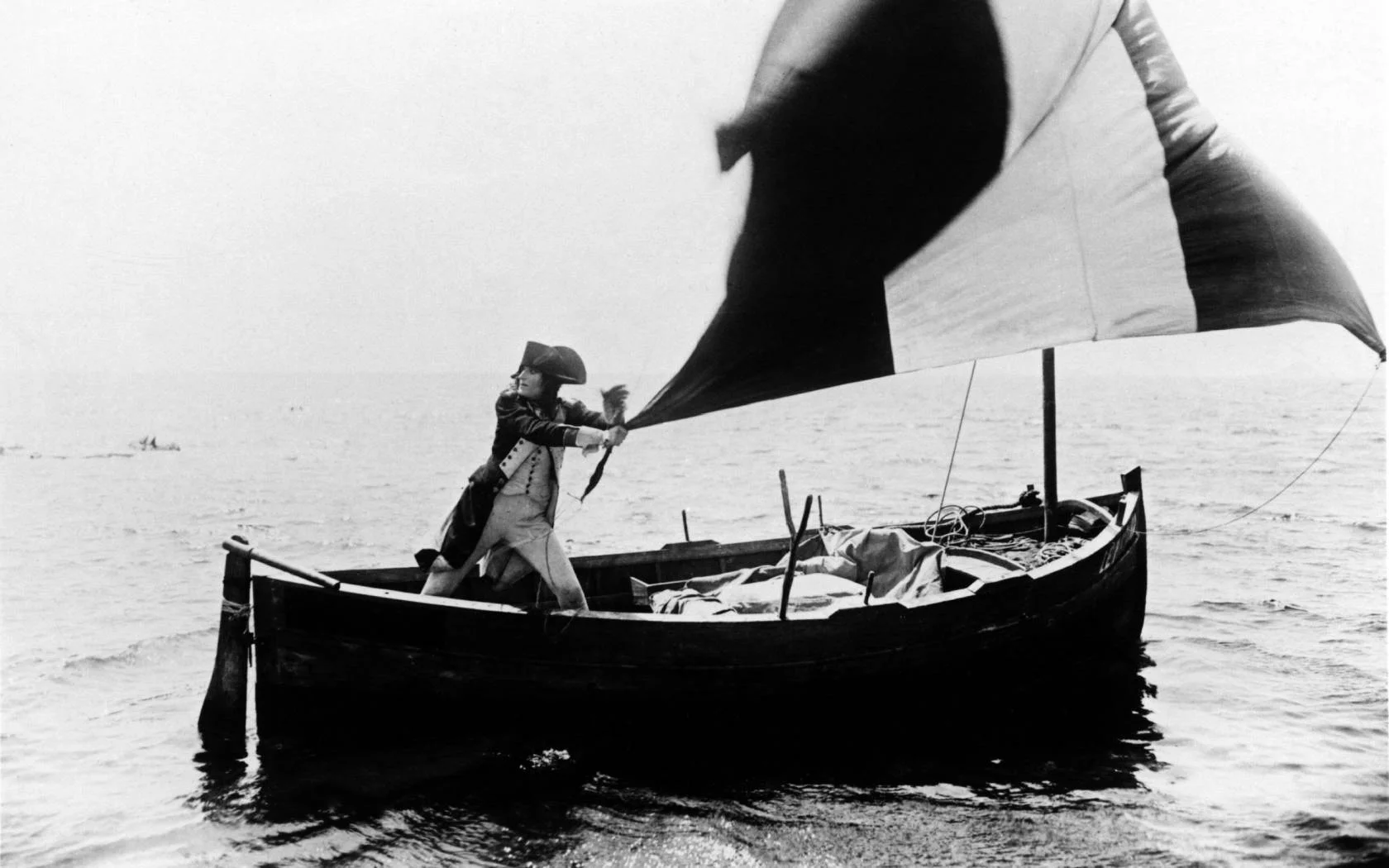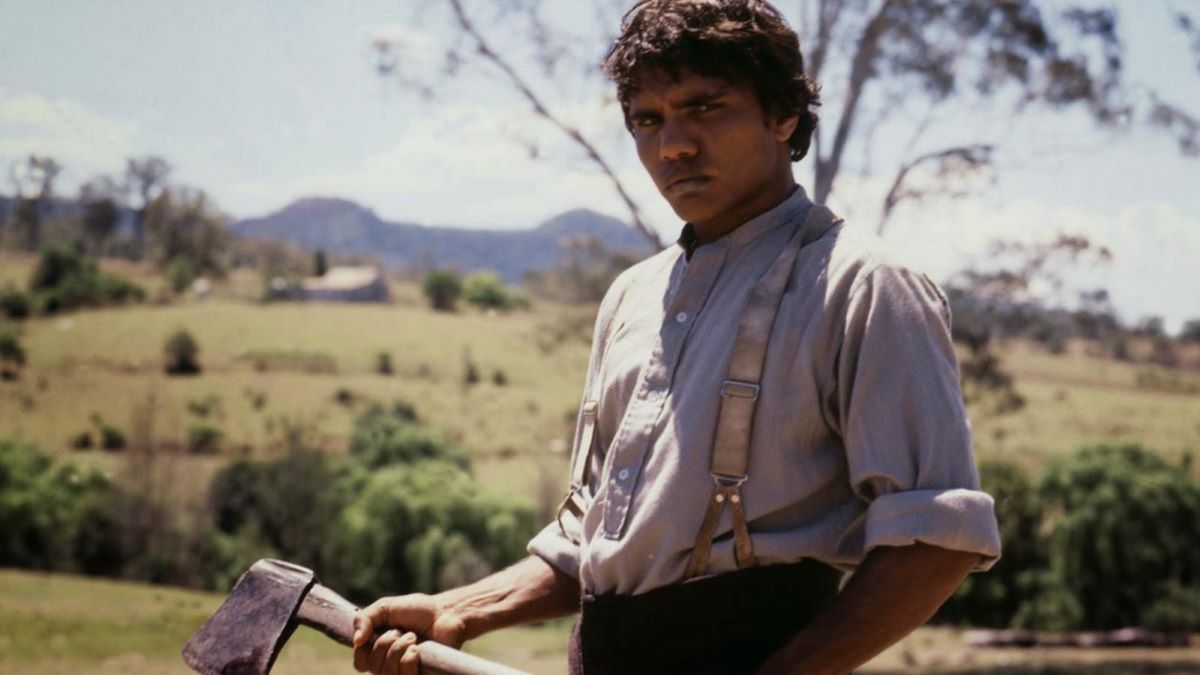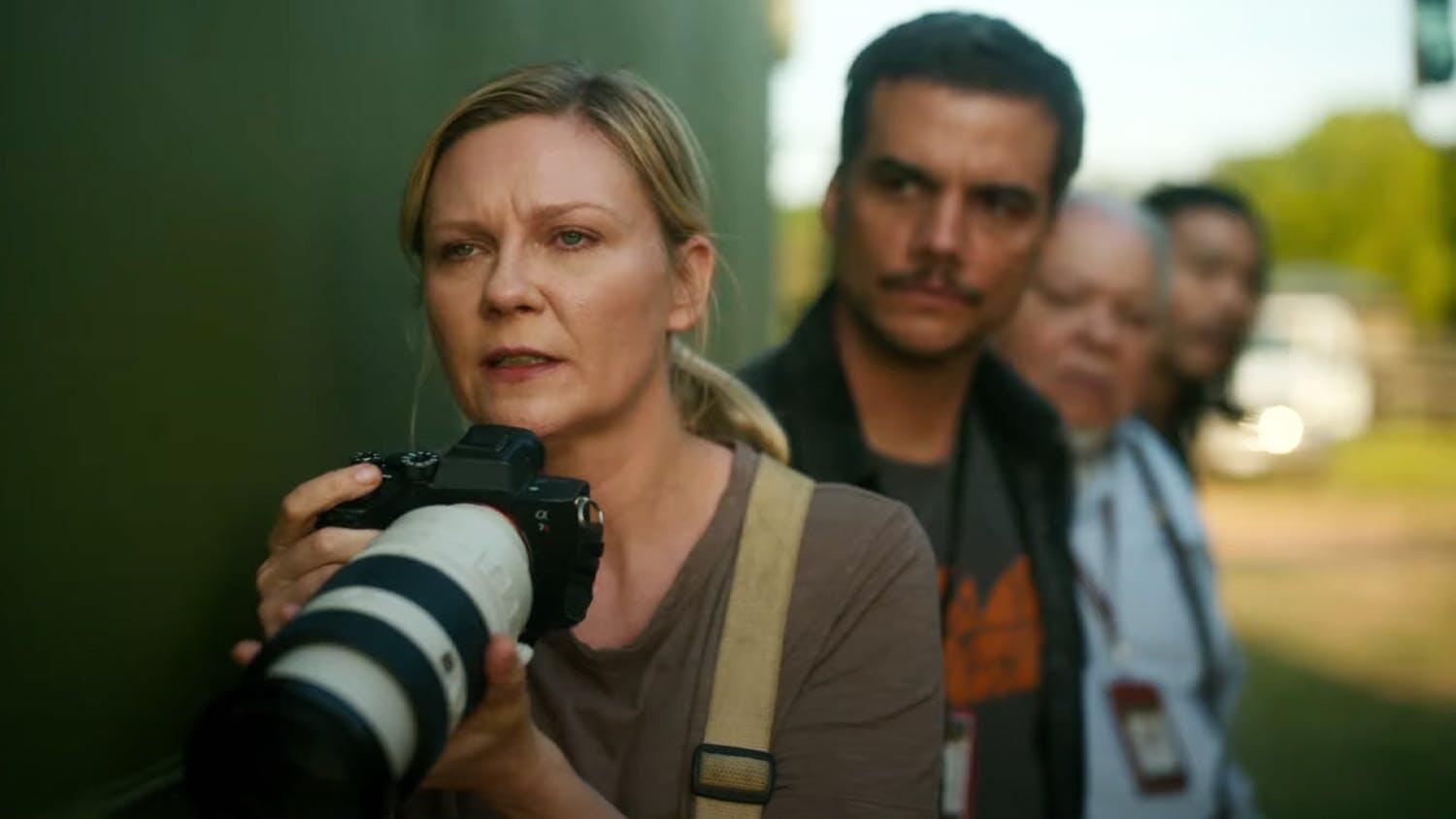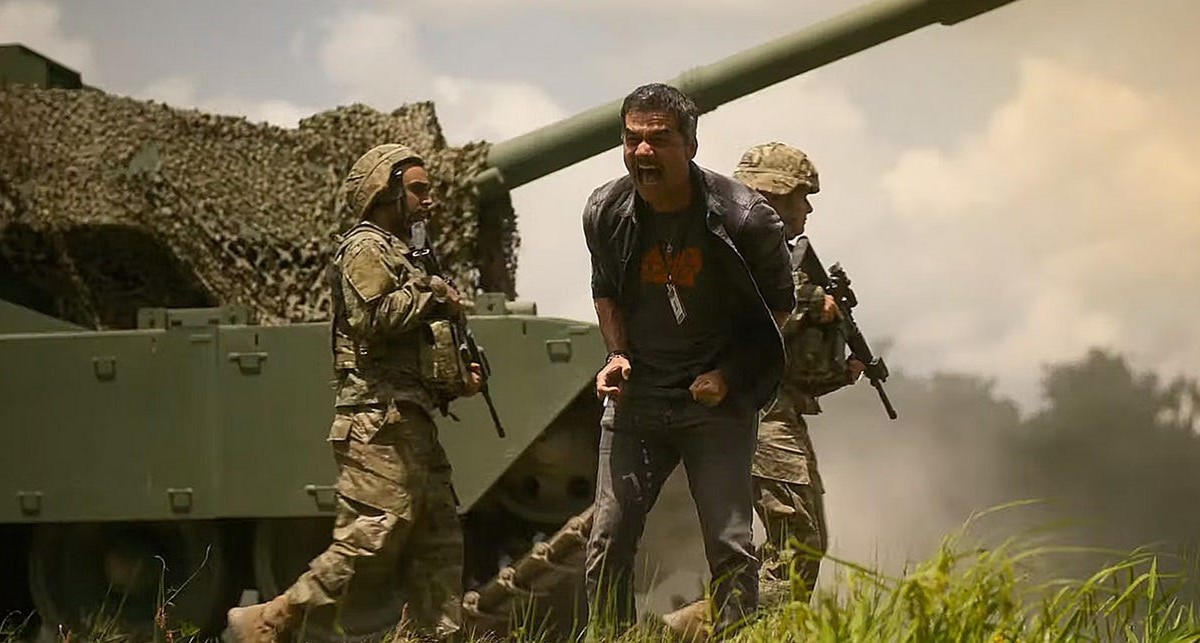by Pauline Kael
A new epic film by Kurosawa is an international event, especially when it’s the only film he has made in Japan in ten years, after he had just about given up hope of ever working there again. On top of that, many people consider the film Kagemusha (The Shadow Warrior)—a masterpiece, and so I haven’t been surprised to receive calls and letters asking why I hadn’t reviewed it yet. The answer is, because I didn’t much like it. I thought it mechanistic yet baffling, and I shoved it to the back of my mind. On the surface, Kagemusha, which is set during the wars of the clans in sixteenth-century Japan (the period just before the country was unified), seems to be about the ruler’s responsibility for the survival of the clan, about the foolishness of rulers who provoke unnecessary battles, and possibly also about the nobility and grace of the samurai who sacrifice their lives for the clan. That is, it seems to be about essentially the same subjects that John Ford treated in Westerns, such as Fort Apache (1948), and that other American directors have taken up in military epics, such as The Charge of the Light Brigade (1936). But the film is distanced, and Kurosawa doesn’t appear to be much interested in the leaders as characters. Kagemusha is something of a contradiction: a movie about immobility.
At the opening, a static triptych composition (like a three-panel Japanese screen) is held for about five minutes. Sitting on a platform in the center panel is the head of the Takeda clan, the warlord Shingen, known as The Mountain; his younger brother (who has sometimes “doubled” for him) sits slightly lower on one side; and on the other, sitting farther down, is a thieving peasant who has been condemned to death but whose life will be spared because he looks so much like Shingen that he can be useful as a new double. It’s a formal, slightly wacko scene: a conversation among three seated men who look identical and are identically bearded and robed. (The scene is so stiff that at first I thought all three must be the same actor, but though Shingen and the thief are both played by Tatsuya Nakadai, the brother is played by Tsutomu Yamazaki.) Shortly after this, Shingen, who is the most powerful of three warlords fighting for control of the country and has almost achieved his goal, is mortally wounded, at night, by a sniper. Before dying, Shingen orders the leaders of the Takeda clan to conceal his death for three years, so that the clan won’t fall apart and be open to attack.
We’re primed for the look-alike peasant to develop will and inner strength as he takes the warlord’s place, but we’re let down. The thief is more heated in the first scene, when he challenges Shingen’s morality—suggesting that Shingen is simply a bigger thief—than he ever is again. Having set up this promising Prisoner of Zenda bit of hokum, Kurosawa doesn’t show us the transformation of the ignorant, mangy thief into a leader, except in a very special sense. Shingen’s effectiveness as a ruler appears to have depended almost completely upon his mountainlike immovability. When a castle belonging to the clan has been attacked and the clan must do battle, the shadow warrior doesn’t lead the soldiers; he sits on a campstool on a hill overlooking the battlefield. (He could be a movie director, except that he’s wearing the helmet of a war god—a huge winged helmet that’s like a great metal butterfly.) The soldiers can look up and see him sitting perfectly still; this is supposed to give his men courage and demoralize the enemy. (And it works: an enemy general, seeing him there in all his majesty, sounds retreat. Ah, yes, we say, the illusion of power defeats the enemy. But do we believe it? It’s a schoolmaster’s fable.) We are told that sitting still is the most difficult thing to do. But it doesn’t look so hard to us—and the idea that impassivity is what made Shingen a great ruler seems a little folksy. Shingen’s brother talks about the torture—the inner pain—of playing a double and giving up one’s identity. But the shadow warrior doesn’t show much in the way of inner conflict. He lives secluded in Shingen’s stronghold, surrounded by vassals and servants who know his true identity, and, apart from the relationship he forms with Shingen’s small grandson (they play together), he’s alone, idling away the three years.
In Kagemusha, as long as people don’t make any moves they’re in great shape, but as soon as they budge they bring chaos down on themselves. The static opening triptych is followed by a startling kinetic sequence: the camera sweeps along with the running figure of a messenger, who rushes down a mountain, hopping lightly in a zigzag over the bodies of hundreds of exhausted, resting soldiers, and causing a stir behind him as he passes. The film veers between immobility and danger. Shingen was wounded because he left his protected position to hear a flute song, and, near the end of the third year, the shadow warrior is exposed as an impostor when he tries to ride Shingen’s horse and is thrown. And when Shingen’s son, who has been passed over in the line of succession, leaves his own terrain and goes to fight on enemy soil, he brings on the destruction of the three echelons of the Takeda army. (“The mountain has moved,” the enemy leader says gleefully, as he prepares to pounce.)
Is Kurosawa suggesting that all rulers are shadow warriors—that their power is in the appearance of implacable strength? Seventy when he made this film, Kurosawa had been boycotted by the Japanese production companies—because of his independence or because of his irresponsibility, depending on whom you ask—and he had lost years in failed efforts to raise money for two previous projects. During four years of trying to get financing for Kagemusha, he made hundreds of drawings and gouaches of the costumes and action, “to leave something behind of my ideas.” Then Francis Ford Coppola and George Lucas persuaded Twentieth Century-Fox to put up one and a half million dollars for world distribution rights outside Japan, and the Toho Company agreed to back the film (which, at a cost of six and a half million dollars, is the most expensive picture ever made in Japan). All this bears a relation to the detached tone of the film, which appears to be a parable about not getting involved Maybe the reason it doesn’t have a clear narrative line is that the incidents are meant to represent a theory of history—the alternation of peace and war, seen as a natural process (and so, hopeless). Kurosawa seems to be saying that you’re safe as long as you sit tight, but sooner or later you’re impelled to do something rash. You stick your head up and it’s cut off. He seems to be saying that wisdom dictates caution, security, stasis, but to be alive is to be subject to impulse, to chaos. The only enduring stillness is the stillness of death. Warfare is treated dispassionately; the pomp and pageantry are cheerless. There’s a touch of Bresson in this film; Bresson has always been seventy.
The modernity of Kurosawa’s earlier samurai films (especially The Seven Samurai) was in their pulse and jagged immediacy. The shocks were never trivial; when we were plunged under the horses’ hooves we weren’t outraged—the violence had something to do with the brute importance of life. This film has no reminders of that kind of barbaric power. The style is ceremonial rather than dramatic; it’s not battle that Kurosawa is interested in here but formations in battle regalia. It’s the flags, the swords, the sun—and the horses. This film is about mobilization for war and war’s aftermath; the absence of the battles themselves seems part of the film’s pattern. In a recent interview in the Times, Kurosawa said, “I am more relaxed and move more slowly, and this is reflected in my technique. I set up the camera, step back, and watch the action flow by.” The action doesn’t exactly flow by, though. I’m not sure how much of what goes on in Kagemusha is related to a change in Kurosawa’s perception and how much is unintentional. The film doesn’t seem contemplative—just uninvolving and spiritless. The narrative line is woozy, and the big showpiece sequences, such as the runner leaping—almost flying—over the soldiers’ bodies, don’t appear to grow out of the narrative; the narrative appears to be shaped to encompass the showpieces. There are some engrossing scenes: the sniper trying to prove he hit Shingen by reenacting how he did it (he shot through a triangular opening in the wall, and by means of triangular calculation); the shadow warrior looking into a giant urn and seeing the mummified Shingen in full armor staring back at him. And there are bizarre scenes, such as the one with a few men on a lake in a tiny rowboat, with this giant urn covered in blue cloth; it’s the biggest urn you’ve ever seen, but onlookers supposedly aren’t going to guess there’s a body inside. (It’s like the setup for a Laurel & Hardy routine: how are the men going to pitch the urn overboard without tipping the boat?)
Probably, Kurosawa doesn’t want us to be concerned about the fortunes of the Takeda clan. The hothead son who brings the clan to ruin is treated as a fact of nature, and when the soldiers lie dead on the shores of a reddening river we don’t seem to be meant to feel any rage at his suicidal folly. And since we have no strong feelings about any individual Takeda warriors, we have no reason to care who wins the climactic battle. Yet this Battle of Nagashino is the symbolic end of the elegant rituals of samurai warfare. When the Takeda armies—the lancers with the heraldic reds that signify fire, the infantry with the greens that signify the forest, and the cavalry with the blacks that signify wind—go forth in battle array, we don’t see swordsmanship, we hear gunfire. These armored knights are easily and efficiently mowed down. This was the historical event that started Kurosawa on the film: the late-sixteenthcentury battle in which on one side no one died, while the other side was wiped out. Even if you take a very long view of history, it is a battle with a special horror. But we aren’t made to feel that horror. In this movie, Kurosawa sees war as part of the turmoil of life, and he asks us simply to observe what he shows us. Perhaps he thinks that this way the horror will reach us at a deeper level. But he’s also in love with the aesthetics of warfare—he’s a schoolboy setting up armies of perfect little soldiers and smiling at the patterns he has devised. These two sets of feelings may have neutralized Kagemusha—put it at a remove and made it somewhat abstract.
Visually, the movie is without depth or shading, and often the compositions seem cramped; possibly the chalky, off-key look was by choice, but, if so, I’m not sure what dictated it. This is Kurosawa’s first period film in color, and he has used color in an eerily unrealistic, painterly way. Soldiers march in psychedelic orange light. When Shingen returns to his shadow in a dream, the imagery suggests the work of twentieth-century painters: it’s visionary and smeary—Kokoschka or Nolde, flattened out on a Sony TV. When the clans prepare for battle, we get a splendid fashion show of sixteenth-century fabrics and uniforms and armor; there are visual reminders of Kurosawa’s Throne of Blood, and mounted soldiers out of Piero della Francesca. With ail the costumed marching men and the horses and the banners and standards, the film has pomp and flourishes. But the grandeur is undercut by melancholy. Nothing heartening is meant to come of these military parades. There are magical, misty shots looking out of a castle onto fogged-over mountains and water, and at one point Shingen’s spirit takes the form of a rainbow-like bar of light. There are lots of flat vertical compositions full of people going up to the top of the frame so that they form a mountain-triangle; in other scenes, soldiers slide down hills. In one virtuoso formal shot, the empty frame is filled by circling soldiers—for all we know, they could be lining up for a high-school-commencement photograph. It’s not just that we might be watching from another planet that gets to be wearing; it’s that even the most conceptually daring scenes lack internal excitement—they feel static. They even look static; the intricately designed fabrics have more life than the geometric compositions. A good score might have helped to give the sequences some tension, but the Western-style music is emotional in a vacuous, slurry way; it gets between you and the movie—rubs you wrong. (This is a recurrent problem with Japanese movies. Remember the Rashomon music that sounded like Ravel’s “Bolero”?) The dialogue scenes, which are largely exposition, are frequently played in a fixed frame—a vise, like a stage—and some of the acting in them is really bad. There’s a likable grizzled old lord—the Fire General, who wears flame-colored kimonos—but the younger and skinnier the lords are, the more they seem to resort to eye-rolling and arm-waving.
The film is fixated on mountains, triangles, threesies. Shingen’s garden has a pyramid hill; the shadow warrior has three guards hidden behind a sliding wall. There are three bumpkin enemy spies who keep turning up and tumbling over themselves, like John Ford’s lovable Irishmen; they’re trying to find out if Shingen is really still alive or is being impersonated. And there are even three tests that confront the shadow warrior when he first takes over for Shingen: with Shingen’s grandson, with Shingen’s concubines, with Shingen’s horse. The first he passes, the second he avoids, the third he avoids until he becomes emboldened by his success at demoralizing the enemy, and the animal proves his downfall. Shingen’s horse cannot be taken in by a look-alike. The movie seems to shift into a different dimension whenever there are horses in the images. After battle, the men die like puppets; it’s the horses who suffer. (They suffer so convincingly that I was distracted by the question of how these effects were obtained.) When the Takeda clan is smashed, wounded horses are lying in the mud. A few struggle to get up (in slow motion), arching their long necks in agony and falling again; one of them is on its back, kicking the air in the effort to right itself; another strains against the bit—a detail out of Guernica. The horses are the film’s visual emblems of kinesis, war, chaos. In a way, it’s as if only the horses could die, because only the horses were fully alive—the horses and the shadow warrior.
Kagemusha is a mixture of formality, impenetrability, and disfiguring’ sentimentality. The central character is pathetic, and Kurosawa seems to embrace his pathos. After the shadow warrior has been thrown from the horse and is exposed, his humility knows no bounds. Inexplicably, Shingen’s brother and the other lords of the clan, who appreciate the service he has done them, won’t let him say goodbye to the child he has come to love; men of the clan pelt him with mud and rocks, and he is driven out into the rain in thin rags. He isn’t resentful: he feels he failed them all. From then on, the movie is like a feudal Stella Dallas, with the heartbroken peasant standing in the crowd at Shingen’s official funeral and staring from behind a bamboo fence at the child he loves. Loyal to the clan forever, he follows the Takeda warriors when the disinherited son’s reckless actions force them into battle. When they fight, he’s there wandering around the battlefield, hiding in tall grass, looking on, wanting to be one of them. He has aged (fast), but, even frail and doddering, he needs to prove his bravery. When the Takeda soldiers are slaughtered, he goes among the corpses and picks up a lance, and is shot by the enemy. But he keeps going, walking into the river. The drowned soldiers have let fall the Takeda battle flag; he sees it and tries to retrieve it. The powerful Takeda clan has been annihilated, and he dies reaching for the clan’s flag, which floats by him, eluding him forever. There’s a pukey warmth in the film’s attitude toward this eternal humble victim, and his is the only courage that is celebrated. We aren’t meant to care about any of the other characters; they’re essentially figures in a design. But we’re expected to empathize with the shadow warrior—he’s that old crock the common man.
The New Yorker, February 2, 1981





1 thought on “KAGEMUSHA (1980) – Review by Pauline Kael”
When I first saw Kagemusha some 40 years ago, I returned to the theater the next night to see it again. It was that riveting. Over the years, Kagemusha remains, for me, one of the great movies. There is a powerful stasis in this film that has always reminded me of The Iliad. I know many people, like Kael, did not care for that. Maybe she didn’t care for The Iliad, either. She has many insights into the mechanics of the movie, but has an opposite reaction to mine.